Filter by

The Expression of gender
Gender is a fascinating category, which has grown steadily in importance across the humanities and social sciences. The book centres on the core of the category within language. Each of the seven contributions provides an independent account of a key part of the topic, ranging from gender and sex, gender and culture, to typology, dialect variation and psycholinguistics.
- Edition
- -
- ISBN/ISSN
- 9783110307337
- Collation
- 230 p.; 22 cm.
- Series Title
- -
- Call Number
- 401.43 CAR e
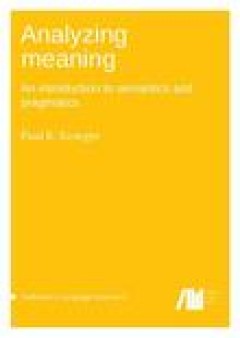
Analyzing meaning
This book provides an introduction to the study of meaning in human language, from a linguistic perspective. It covers a fairly broad range of topics, including lexical semantics, compositional semantics, and pragmatics. The chapters are organized into six units: (1) Foundational concepts; (2) Word meanings; (3) Implicature (including indirect speech acts); (4) Compositional semantics; (5) Moda…
- Edition
- -
- ISBN/ISSN
- 9783961100354
- Collation
- -
- Series Title
- -
- Call Number
- 412 KRO a
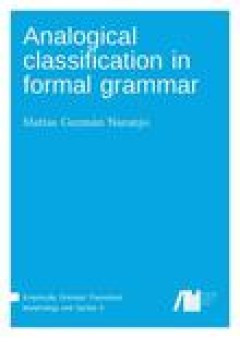
Analogical classification in formal grammar
The organization of the lexicon, and especially the relations between groups of lexemes is a strongly debated topic in linguistics. Some authors have insisted on the lack of any structure of the lexicon. In this vein, Di Sciullo & Williams (1987: 3) claim that “[t]he lexicon is like a prison – it contains only the lawless, and the only thing that its inmates have in commonis lawlessness”.…
- Edition
- -
- ISBN/ISSN
- 9783961101870
- Collation
- -
- Series Title
- -
- Call Number
- 425 NAR a
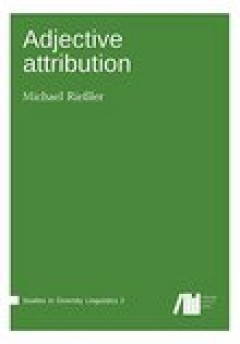
Adjective attribution
This book is the first typological study of adjective attribution marking. Its focus lies on Northern Eurasia, although it covers many more languages and presents an ontology of morphosyntactic categories relevant to noun phrase structure in general. Beside treating synchronic data, the study contributes to historical linguistics by reconstructing the origin of new types specifically in the lan…
- Edition
- -
- ISBN/ISSN
- 9783944675657
- Collation
- xiv, 301 p.; 23 cm.
- Series Title
- -
- Call Number
- 414 RIE a
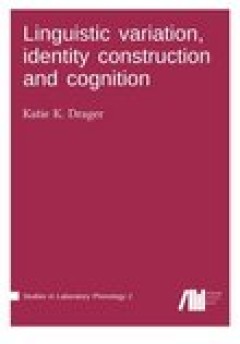
Linguistic variation, identity construction and cognition
Speakers use a variety of different linguistic resources in the construction of their identities, and they are able to do so because their mental representations of linguistic and social information are linked. While the exact nature of these representations remains unclear, there is growing evidence that they encode a great deal more phonetic detail than traditionally assumed and that the phon…
- Edition
- -
- ISBN/ISSN
- 9783946234258
- Collation
- 244 p.; 23 cm.
- Series Title
- -
- Call Number
- 414 KAT l
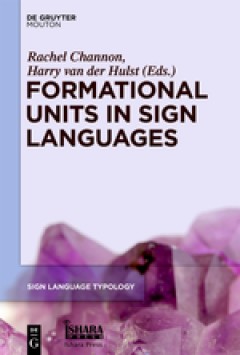
Formational units in sign languages
Sign languages and spoken languages have many fascinating differences, caused primarily by the reaction of the human mind to different modalities, but also by some important social differences. This book examines the effects of these and other differences on sign language phonology and phonetics using observation, experimentation and theory. Languages examined include Asian, Middle Eastern, Eur…
- Edition
- -
- ISBN/ISSN
- 9781614510680
- Collation
- -
- Series Title
- -
- Call Number
- 414 FOR f

Sites of translation : what multilinguals can teach us about digital writing …
Winner of the 2016 Sweetland Digital Rhetoric Collaborative Book Prize Sites of Translation illustrates the intricate rhetorical work that multilingual communicators engage in as they translate information for their communities. Blending ethnographic and empirical methods from multiple disciplines, Laura Gonzales provides methodological examples of how linguistic diversity can be studied in pra…
- Edition
- -
- ISBN/ISSN
- 9780472124343
- Collation
- -
- Series Title
- XVI, 135 p.
- Call Number
- 418.02 GON s
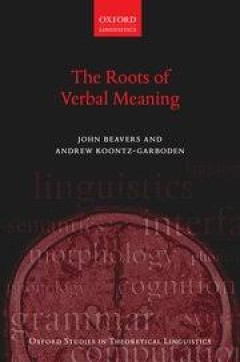
The Roots of verbal meaning
- Edition
- -
- ISBN/ISSN
- 9780198855781
- Collation
- 288 p.; 23 cm.
- Series Title
- -
- Call Number
- 412.09 BEA r
- Edition
- -
- ISBN/ISSN
- 9780198855781
- Collation
- 288 p.; 23 cm.
- Series Title
- -
- Call Number
- 412.09 BEA r

Semantics and morphosyntactic variation: qualities and the grammar of propert…
- Edition
- -
- ISBN/ISSN
- 9780198744580
- Collation
- 192 p.; 23 cm.
- Series Title
- -
- Call Number
- 415 KOO s
- Edition
- -
- ISBN/ISSN
- 9780198744580
- Collation
- 192 p.; 23 cm.
- Series Title
- -
- Call Number
- 415 KOO s

Inquisitive semantics
There is an age-old tradition in linguistics and philosophy to identify the meaning of a entence with its truth-conditions. This can be explained by the fact that linguistic and philosophical investigations are usually carried out in a logical framework that was originally designed to characterize valid reasoning. Indeed, in order to determine whether an argument is valid, it suffices to know t…
- Edition
- -
- ISBN/ISSN
- 9780198814788
- Collation
- 240 p.; 23 cm.
- Series Title
- -
- Call Number
- 412 GRO i
 Computer Science, Information & General Works
Computer Science, Information & General Works  Philosophy & Psychology
Philosophy & Psychology  Religion
Religion  Social Sciences
Social Sciences  Language
Language  Pure Science
Pure Science  Applied Sciences
Applied Sciences  Art & Recreation
Art & Recreation  Literature
Literature  History & Geography
History & Geography